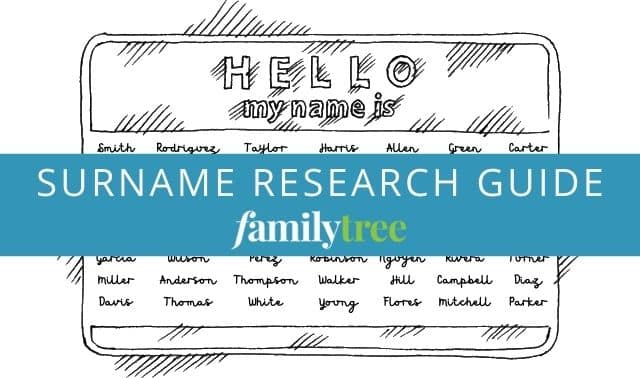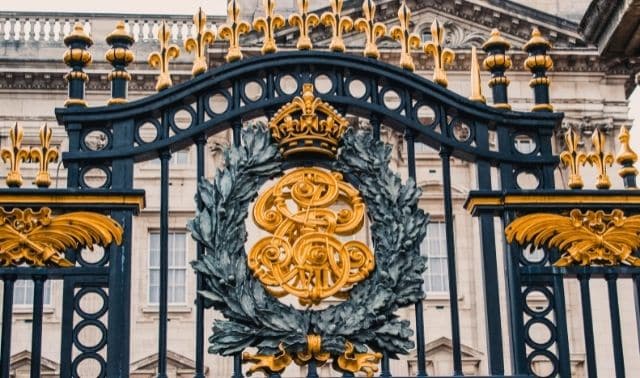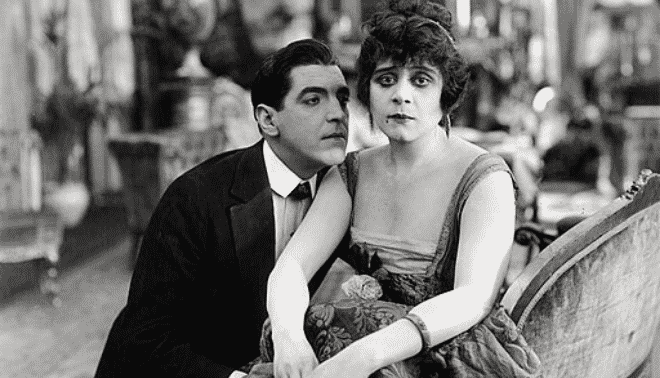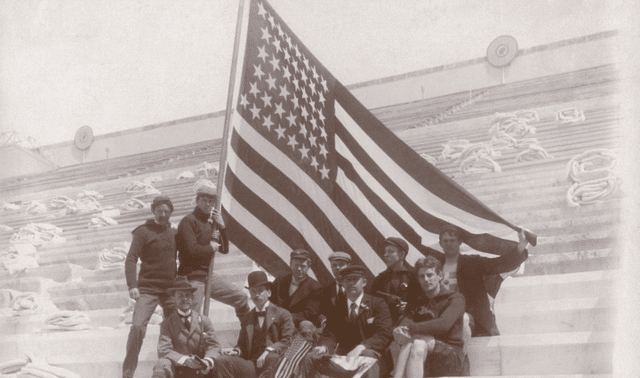Sign up for the Family Tree Newsletter! Plus, you’ll receive our 10 Essential Genealogy Research Forms PDF as a special thank you.
Get Your Free Genealogy Forms
"*" indicates required fields

The death of Pope Francis on 21 April 2025 set in motion an election of global importance: that of the next pope. Just a few weeks later, the 1.4 billion Roman Catholics worldwide (roughly half of all Christians) celebrated the announcement of the next pontiff, Pope Leo XIV.
Here are answers to some common questions about the pope, papal names, and the Holy Father’s relevance to genealogists.
Who Chooses the Pope, and How?
The pope is both the leader of the Catholic Church and the head-of-state of the Holy See and the sovereign nation of Vatican City. As a result, the papacy is a kind of elected royalty passed from one monarch to the next.
After a pope dies, an assembly of cardinals (specially appointed bishops, most of them from high-ranking offices of the Church or prominent dioceses) meet in Vatican City’s Sistine Chapel to select a new pope. There at the “papal conclave,” cardinals nominate candidates—usually one of their own—and vote on them in a secret ballot.
The conclave begins roughly three weeks after the previous pope’s passing, usually after the pope’s funeral and a nine-day mourning period. The conclaves in 2013 and 2025 that elected Francis and Leo XIV, respectively, each took just two days.
Voting results are reported to the public by use of smoke burned from the chapel’s chimney: black smoke means a candidate has not reached a majority of votes, and white smoke means a new pope has been elected. The conclave holds up to four votes each day until a majority is reached.
Once a pope has been elected and accepts the results, a senior cardinal announces Habemus Papam (Latin for “We have a pope”) along with the pope’s name on the balcony of St. Peter’s Basilica.
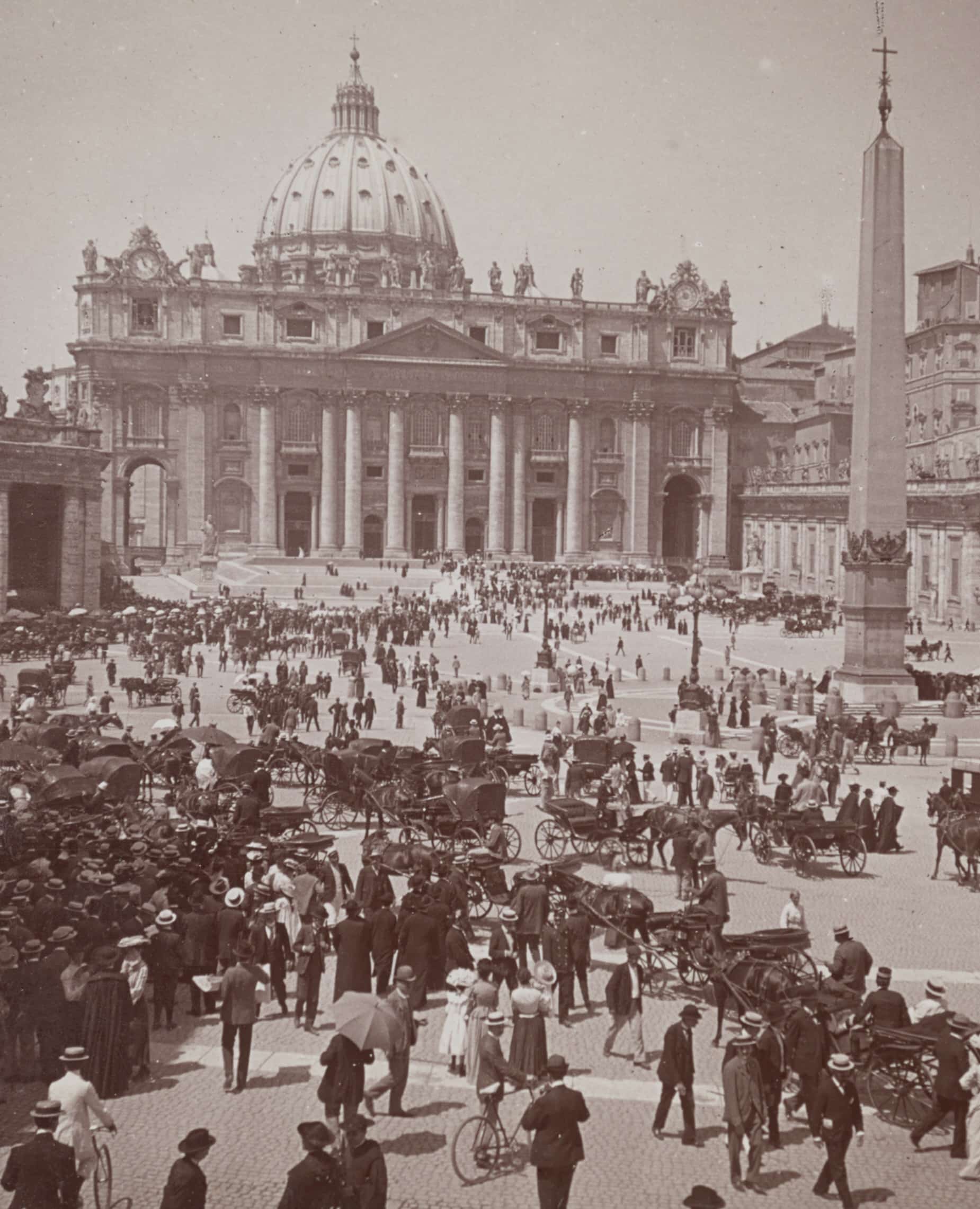
Who Can Be Pope?
Any Roman Catholic man can theoretically become pope. However, since 1378, every pope has first been a cardinal. Only a handful of popes in the last 1,000 years have not first been bishops; at least two, Gregory X (1271–1276) and Leo X (1513–1521), were not even priests upon their election.
In the Catholic Church, women are not permitted to be ordained priests or consecrated bishops (and, thus, become cardinals). Unless the Church were to revisit this doctrine, it’s highly unlikely a woman—or any layperson, for that matter—would be elected pope. That said, legends abound about “Pope Joan,” a ninth-century woman said to have served as pope.
How Does the Pope Pick His Name?
Early popes continued to use their baptismal names after election. Marcellus II (who was pope just for a few weeks in 1555) was the last not to adopt a papal name.
But since the mid-1500s, popes have been free to choose their own regnal names upon election. They generally select a name unrelated to their secular one. Pope Francis, for example, was born Jorge Mario Bergoglio.
Some popes choose to honor previous pontiffs with their choice, while others evoke beloved saints or notable Church figures. Some even choose a name after a family member:
- Leo XIV (2025–present): likely after Leo XIII, who’s remembered for being the “Pope of the Workers” and his dedication to the writings of St. Augustine (the namesake of the Augustinian order to which Leo belongs)
- Francis (2013–2025): after St. Francis of Assisi, the founder of the Franciscan order (to which Francis belonged) who is renowned for his care for the poor, the environment and animals
- Benedict XVI (2005–2013): after Benedict XV (pope during World War I) as well as St. Benedict of Nursia, who founded the Benedictine order and is especially venerated in Benedict XVI’s home country of Germany
- John Paul I (1978) and John Paul II (1978–2005): after their predecessors, John XXIII and Paul VI
- Paul VI (1963–1978): after the apostle Paul, an early Christian missionary to whom much of the New Testament is attributed
- John XXIII (1958–1963): after his father and the parish church he grew up in
- Pius XII (1939–1958): after his predecessor, Pius XI
- Pius XI (1922–1939): for it being a “name of peace”—notable given his papacy immediately precedes World War II
Like many monarchs, popes who select a name that has been used previously affix a Roman numeral to their name—for example, John Paul II and Benedict XVI.
The short-reigning John Paul I was the first to select a double name, and Francis was the first since Pope Lando in 911 not to use an established papal name. In addition to Francis, papal names used only once include Peter (likely out of respect for the first pope), Fabian, Linus, Mark and Valentine.
John is the most-common papal name, used most recently by the aforementioned John XXIII in 1958. Despite the numbering, there have actually been only 21 popes named John; the original John XVI has since been deemed illegitimate, and there was no John XX because of a misunderstanding of Church records.
Popes sometimes have to grapple with the sordid history of a predecessor of the same name. Benedict XVI, for example, had to overlook Benedict IX’s scandalous stints as pontiff; the latter was installed as pope due to bribery, accused of corruption and sexual crimes, and found twice complicit in trying to oust his successors. He even resigned the papacy to marry his cousin.
In a similar vein, John XXIII shared a name with a prominent “anti-pope” from a tumultuous time in Church history, Cardinal Baldassare Cossa. In what became known as the Western Schism, two lines of rival popes were elected in Rome and Avignon; a special counsel elected yet another in Pisa. Cossa succeeded the latter in 1413 and chose the name John XXIII, but was deposed the next year.
How Many Popes Have There Been?
The number of popes is somewhat disputed. Records from early history are spotty, and the Church has reckoned with dozens of so-called anti-popes. In fact (as previously discussed), there were multiple times throughout history in which more than one man claimed to be pope.
That said, more than 260 men have served as head of the Roman Catholic Church. The Vatican’s official website lists 267 names, claiming a line of succession all the way back to the biblical St. Peter, one of Jesus’ most-prominent disciples.
Another factor: Some other Christian denominations use the term “pope” to refer to a similarly ranked clergy. As of 2025, the head of the Coptic Orthodox Church, for example, is Tawadros II, whose title is both “Pope” and “Bishop of Alexandria.”
The ‘Family Tree’ of Popes
Cardinals are handpicked by preceding popes, creating a kind of lineage between cardinals (who are selected by a pontiff and can help elect a future one) and popes (who themselves were once cardinals). For example, Pope Francis was elected a cardinal by Pope John Paul II in 2001. John Paul II, in turn, was elected by Paul VI.
In addition, bishops are consecrated only by popes or other bishops. This results in a kind of “episcopal genealogy” that can be charted in a family tree. A user of the site UsefulCharts created such a tree that dates all the way back to the early 16th century, and founder of UsefulCharts Matt Baker has a video breakdown.
According to the chart, Pope Francis (consecrated as the bishop of Buenos Aires in 1992) “descended” from a line of Argentinian and Italian bishops. He shared a common “ancestor” with his predecessor Benedict XVI: Cardinal Giacomo Filippo Fransoni (died in 1856), who consecrated a cardinal who consecrated a long line of German bishops that resulted in Benedict XVI.
Important Popes for Genealogists
Given the prominence of the Roman Catholic Church throughout history, a handful of popes were relevant to family research:
- Pius IV (1559–1565) oversaw the final sessions of the Council of Trent, which mandated record-keeping in Catholic parishes starting in 1563. As a result, many church parish registers in Europe and its former colonies begin this year (though, of course, not all of them survive). Regardless of country, these were kept in Latin.
- Gregory XIII (1572–1585) introduced the Gregorian calendar, the basis of the calendar used in most of the world today. Countries under the Catholic Church’s influence—namely, France, Italy, Poland, Portugal, Spain and so on—switched over in 1582. But Protestant countries were loath to do so; Great Britain and its colonies (notably, the United States) didn’t change until 1752. This resulted in diverging dates in records of some events: “Old Style” (O.S.) in the preceding Julian calendar or “New Style” (N.S.) in the Gregorian calendar, offset by 10 days.
- John XXIII (1958–1963) and Paul VI (1963–1978) oversaw the Second Vatican Council. This ushered in a series of reforms within the Catholic Church, notably the ability to celebrate mass in local languages instead of Latin. Catholic records from this date forward might be in either Latin or the local language of the congregation.
Related Reads
Last updated: May 2025

